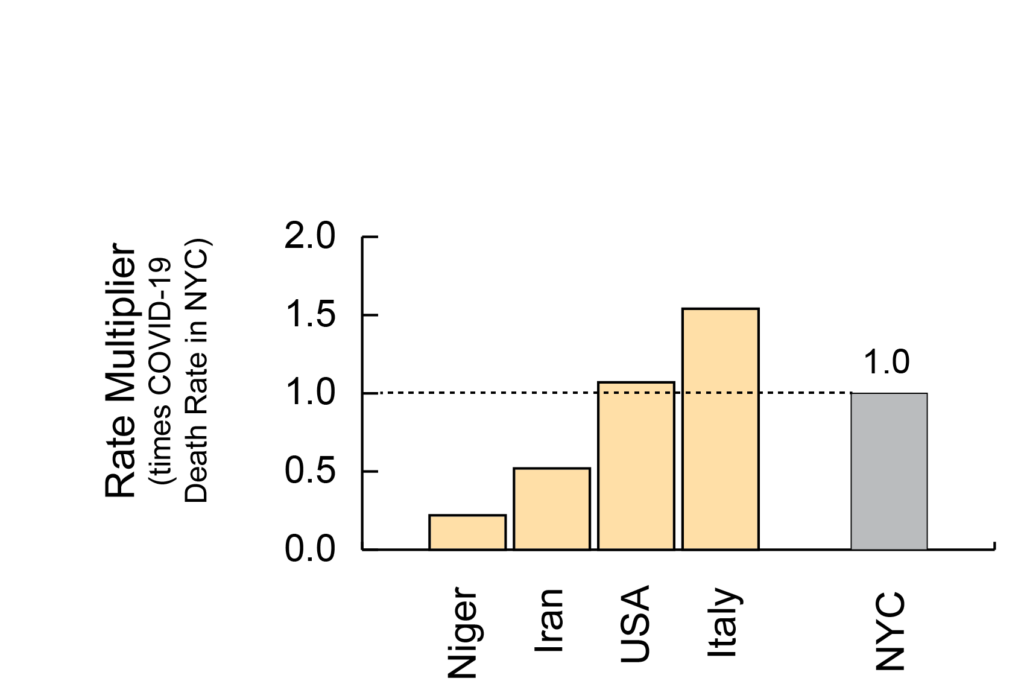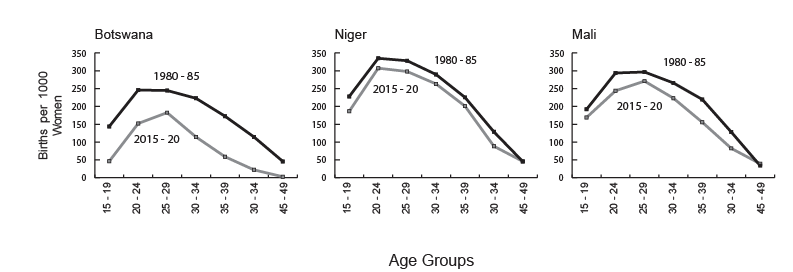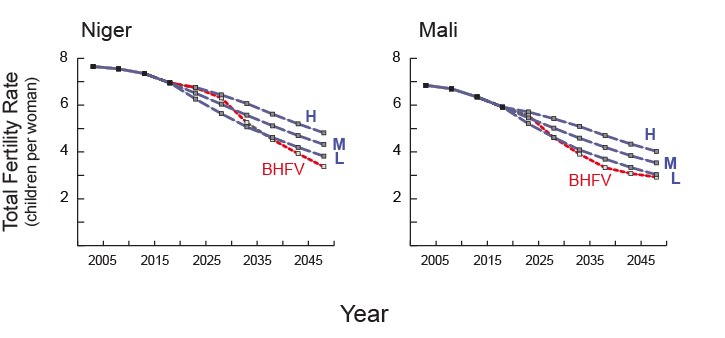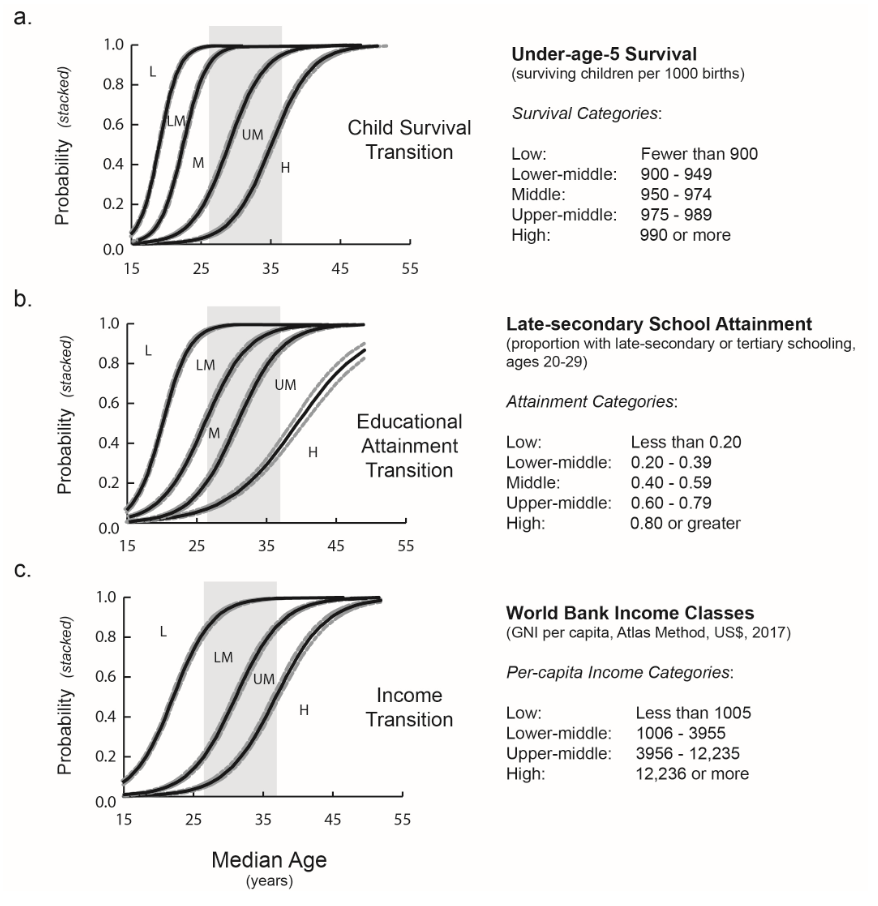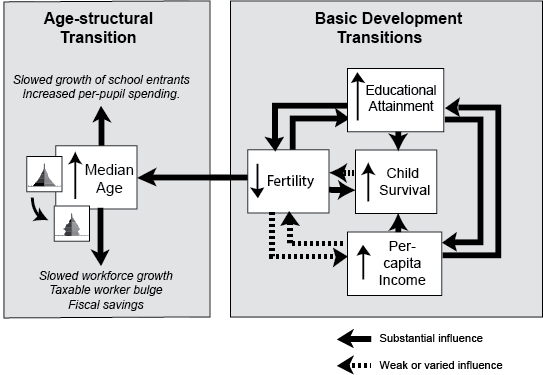
February 14, 2023 By Richard Cincotta
When a military-led or military-influenced coup d’état occur in a foreign country, does evidence from demographic research merit consideration in the U.S. foreign policy response? It’s a question that U.S. policymakers should be asking as deteriorating political conditions in West Africa come increasingly into confluence with the limited tools available either to deter or respond to illegal and extra-legal forms of political succession.
A recent series of military-led takeovers in that region has led several authors to criticize the U.S. government’s inconsistent record of response to coups. The focus of these articles has been the State Department’s reluctance to trigger Section 7008 of the Department of State, Foreign Operations, and Related Programs Appropriations Act—a congressionally-mandated policy intended to encourage a swift return to civilian rule, to ultimately open a path to elections, and to discourage other would-be coup plotters. Once a post-coup regime is identified and Section 7008 is procedurally set in motion, the act restricts expenditures by USAID programs in that country. Currently, the only exceptions to 7008’s punitive restrictions apply to democracy assistance and some types of humanitarian aid.
Some critics argue that to avoid triggering Section 7008 is to flout a law that clearly intends to restrict post-coup regimes that have been installed using military power. Others point out that coups create complex international political situations, and argue in favor of the State Department retaining some flexibility.
Political demography offers an alternative criticism—not of the U.S. State Department’s reluctance to trigger Section 7008, but of its broad restrictions. This criticism argues that Section 7008’s restrictions may not always work in the best long-term interests of the citizens of the countries affected, of the region, or of the United States.
Unlike other foreign-policy perspectives, political demography’s recommendations are rooted in published research that uses models, based on 50 years of age-structural data (estimates of the numerical distribution of residents, by age), to predict various forms of political behavior and socioeconomic performance. A growing body of research demonstrates that countries in the youthful phase of the age-structural transition (Fig. 1), as a group, have been the most likely to be engaged in armed civil conflict, to occupy the lowest levels of social and economic development, and to lose liberal democracy. Recent research on successful coups d’état also shows a similar demographic pattern of risk. In each case, the shift from a youthful to an intermediate age-structure—the result of a decline in fertility to below 3 children per woman—is associated with lower probabilities of political instability and higher probabilities of development.

Figure 1: Principal Phases of the Age-structural Transition
The Golden Rule
From this research comes a general recommendation, or what could be called political demography’s golden rule: Avoid policies that keep persistently youthful populations demographically young. Their consequences can come back to bite you.
Rather than promoting long-term political stability, some of 7008’s restrictions run counter to this recommendation by disrupting social programs that have played critical roles in advancing the age-structural transition—specifically, programs that improve access and quality of family planning and other reproductive health services, efforts that augment girls’ educational attainment, and activities that advance women’s autonomy and rights.
A closer look at the relationship between coups d’état and countries in the youthful phase of the age-structural transition suggests that political demography may offer valuable insights that could offer an occasion to rethink Section 7008 and broader U.S. policy.
Mind the Gap
Even during the Cold War, when the risk of a coup d’état was more than three-times as high as today, a wide and persistent disparity (Fig. 2) existed between youthful countries—as a group, the most vulnerable to coups, regardless of their geographical location—and countries in their intermediate and mature phases. Among youthful countries, those with a population in the so-called early segment of this phase (with a median age of 20 years or less) have consistently been the most vulnerable to a successful coup and the most likely sites of back-to-back coups (coups that occur within five years of a prior coup).

Figure 2: Vulnerability to Coups, by Age Structure
Shifts in population age structure, coupled with the close of the Cold War, provide a statistical explanation for most (but not all) of the recent downward trend in coups. Data compiled by the University of Illinois’s Cline Center indicate that this decline has been steep: from 39 coups in 24 countries (each with a population over 500,000 residents) during the 1990 to 1994 period to a post-World-War-II low of just 5 coups in 5 countries from 2015 to 2019.
Despite concerns raised by the recent uptick in coups (8 coups in 6 countries since the beginning of 2020), political demographers are more worried by the slow rate of age-structural change that the UN Population Division projects for the Greater Sahel (from Senegal and Mauritania, east to Somalia) and tropical Africa (south of the Sahel to Angola and Mozambique). If the predictions of age-structural models prove reasonably accurate, analysts should expect successful coups to occur in 4 to 9 countries every five years, from now to 2040. At least two-thirds are likely to occur in countries in the transition’s youthful phase. Because countries in the early segment of the youthful phase are typically most vulnerable, the Greater Sahel and tropical Africa are likely to remain hotspots for coups d’état (see Map, Fig. 3).

Figure 3: Population Age Structures, 2020 (estimates) and 2040 (projections)
Among countries in either the intermediate or mature phases, not only are coups substantially less frequent, they are also often qualitatively quite different. For example, coups in the intermediate and mature phases are nearly twice as likely as those in the youthful phase to be instigated by a large-scale popular uprising—a so-called color revolution, such as Georgia’s Rose Revolution in 2003, Tunisia’s Jasmine Revolution in 2011, or Algeria’s Revolution of Smiles in 2019. Similarly, later-phase coups have been twice as likely as those in youthful countries to be carried out by a faction within the ruling government (known as a palace coup).
The Constraints of a Youthful Age Structure
One explanation for a state’s vulnerability to a coup lies in the political regime’s inability to meet the demands of governance. Analyses of data from the World Bank’s World Governance Indicators database suggest that, as a group, countries with youthful populations have been scored as the least effectively governed, the least able to control corruption, the least likely to apply the rule of law, and the least politically stable (Fig. 4).

Figure 4: Youthfulness and Governance, 2018
Notably, each of these trends reaches its upper-middle scores (above zero), near the middle of the demographic window—a series of development-favorable age structures encountered midway through the age-structural transition (beginning at a median age of 26 years and ending at about 40 years).
With the exception of some oil and mineral-rich states and a few of the least populous states (less than 5 million residents), youthful countries rarely attain the World Bank’s upper-middle income category or achieve similarly high levels of child survival and educational attainment until they attain the demographic window. Moreover, youthful countries have been the least likely to end persistent and intermittent armed civil conflict—a factor that figures in coups led by junior military officers (for example, the recent back-to-back coups in Mali and Burkina Faso), who typically justify their actions with claims that political leaders and senior military officers were too inept and corrupt to resolve the ongoing insurgency.
Age Structure’s Conundrum of Causality
Age-structural models are not without their detractors. Critics have puzzled over causal connections that might strengthen their probabilistic predictions, or argued that age structure is merely a passive reflection of the current level of economic development. Yet this latter characterization falls short of explaining how the UN Population Division’s medium scenario—a projection that chooses the statistical middle-path from thousands of similar historical patterns of fertility and mortality change—has been used successfully to predict both the rise and demise of liberal democracy, years before other discernable economic or political signals were on the horizon.
When first presented with evidence of age structure’s predictive abilities more than a decade ago, a group of intelligence analysts and researchers broke this riddle of causality into three hypothetical possibilities:
- First, the age-structural transition’s most development-favorable distributions contribute to, or facilitate, stronger state performance, higher tax revenues, higher levels of human capital, and more stable political behavior.
- Alternatively, the transition’s least favorable age structures constrain socioeconomic and political progress, encourage non-productive spending, or result in shortfalls in services that undermine government legitimacy and promote state weakness.
- And lastly, progress along the age-structural transition simply discloses poorly visible set of social and institutional transformations that precede more extensive, more observable socioeconomic and political changes.
The group concluded that the most appropriate choice was, “Probably all of the above.”
Opting for Transition
At the very least, this analysis should encourage policymakers to rethink a pair of basic policy questions: When are Section 7008’s broad set of restrictions most likely to succeed? And when, instead, might these restrictions inhibit the age-structural transition and prolong conditions that facilitate additional political instabilities?
According to political demography’s calculus, the answers to these basic questions hinge on a country’s position in the age-structural transition. Post-coup regimes that govern countries in the transition’s intermediate or mature phase (see Fig. 1)—including Tunisia, Myanmar, and Thailand—currently face low risk of experiencing an outbreak of a non-ethnic civil conflict and a relatively high probability of experiencing political liberalization. By applying Section 7008 restrictions, their governments might, indeed, be successfully coaxed back onto their former track of political development.
However, for post-coup regimes on the wrong side of the vulnerability gap, that same calculus suggests that Section 7008 be considered with much more caution, and that the U.S. should avoid actions (as political demography’s golden rule suggests) that might prolong a country’s persistence in the transition’s youthful phase. In many of today’s most youthful countries, it seems doubtful that the possible short-term payoffs from applying 7008’s restrictions could be worth the long-term costs of setbacks to women-centered programs that have labored for decades to train in-country staff and to overcome formidable traditional, religious, and bureaucratic barriers.
Apparently, there are two ways to discourage coups d’état without breaking political demography’s golden rule. The most effective way (and the most difficult way in a divided Congress) would be to broaden Section’s 7008’s exemptions to include assistance to family planning and other reproductive health services, girls’ education, and women’s rights efforts. The alternative is to continue to avoid triggering Section 7008, while focusing on diplomacy and defense-cooperation to encourage civilian rule and discourage would-be coup perpetrators.
Richard Cincotta is a Wilson Center Global Fellow at the Environmental Change and Security Program. He wishes to thank the Population Institute for its support during this research.
Sources: UNDESA, Population Division, Population Prospects, the 2022 Revision, 2022; World Bank World Governance Indicators Database, 2020; Peyton, B. et al. Coup D’état Project Dataset, v. 2.0.0, Univ. of Illinois, Cline Center for Advanced Social Research, 2020; National Intelligence Council, Global Trends 2030: Alternative Worlds, 2012.
Photo Credits: Woman speaking at the “Women, Peace and Security” event in Mali organized by the Government of Mali in partnership with UN Women, courtesy of Flickr user UN Women/Ryan Brown.


